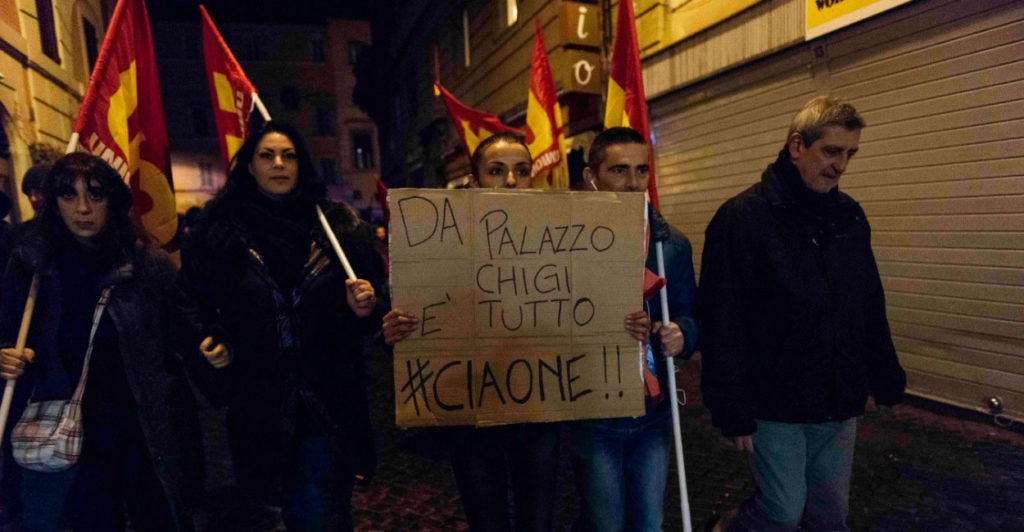Italy just held a national referendum, and the prime minister has now announced that he will resign. Here’s a breakdown of the referendum and what the outcome means.
What Was the Italian Referendum Vote All About?
Italian voters were asked in a public referendum to either accept or reject significant changes to Italy’s Constitution. Had the referendum passed, 47 of the constitution’s 139 articles would have been changed.
Some of the changes would have significantly weakened the Italian Senate, reducing the number of senators from the current 315 (which are directly elected) to 95 to be elected from regional councils—plus an additional five to be nominated by the president.
The proposed changes would also have depleted the Senate’s powers, making it mostly a consultative body, retaining full legislative powers only on matters of constitutional law and reforms. It would also have removed the Senate’s ability to hold votes of no confidence.
In addition, had the referendum passed, some powers of the regional governments, including overseeing strategic infrastructure and energy, would have been transferred to the central government.
Other proposed changes included shifting the amount of support needed in Parliament to elect a new president, and changing how judges to Italy’s Constitutional Court get elected, among other things.
The proposed constitutional changes were previously passed in Parliament, but lacked the required two-thirds majorities in both the Chamber of Deputies and the Senate. As a result, the changes were therefore put to a referendum in accordance with the Italian Constitution.
Why Was the Result Significant?
The proposed changes would have increased the power of the central government in Rome at the expense of regional governments.
Changes would also have expanded the power of the executive branch at the expense of Parliament, making it easier for the ruling government to pass legislation through a weakened Senate.
Italian politics is historically fractious, with legislation being difficult to pass. Ruling governments are frequent, fleeting, and usually unstable. Italy has had 64 governments since the end of World War II—a period of only 71 years.
The center-left government of Prime Minister Matteo Renzi lobbied hard for a “yes” vote on the referendum, with the prime minister promising to step down should it fail.
On Sunday, over 59 percent of Italian voters rejected the proposed constitutional changes. Turnout was around 65 percent.
The decisive result had the immediate impact of Renzi committing to resign, stating that he took “full responsibility for the defeat.” Renzi will resign as soon as next year’s budget is passed, which could happen as early as Friday.
Opposition to the proposed constitutional changes was widespread, but especially strong in southern Italy. Early indications were that young voters were also strongly opposed to the changes.
Why Did the Referendum Fail?
When asked in May 2016 what the most important issues facing Italy were, Italians cited unemployment, the economic situation, and immigration. The Renzi government’s failure to adequately address these challenges may have resulted in the “no” vote in the referendum.
The Italian economy continues to struggle, Italy’s unemployment rate is 11.6 percent, and youth unemployment sits at 36.8 percent. Political instability means it will be less likely that economic reforms will come to pass, and likely that more tough economic riding is ahead for the nation.
In particular, there is also concern that the renewed instability could trigger a long-feared Italian banking crisis.
According to reports, “The 14 large Italian banks sit on 286 billion euros (more than $300 billion) of bad loans, debt securities, and off-balance sheet items. That corresponds to more than one in every 10 Italian loans.”
Italian bank stocks took an immediate hit following the vote. Business and political leaders in Italy are particularly concerned about Banca Monte dei Paschi di Siena, the country’s third-largest commercial and retail bank. Calls for a government bailout of the bank could grow in the coming weeks.
Italy has also suffered under the weight of the migrant crisis, with approximately 154,000 migrant arrivals in 2015 alone. The Renzi government’s failure to stem the tide of arrivals on Italian shores may have played a role in the result.
In addition, the result could also be seen in part as a rejection of the EU’s endless drive toward integration.
Renzi is a committed believer in the European project. In February, his government published a paper that called for more EU integration as a salve for the economic problems facing the eurozone. The paper called for, in part, new EU stimulus money and the creation of EU-wide unemployment insurance.
The Renzi government had also been one of the nations at the forefront of the drive for deeper EU defense integration and the creation of an EU army. Centralization of power was the main driver behind the proposed constitutional reforms that Italian voters rejected.
What’s the Likely Impact of the ‘No’ Vote in Italy?
Italy’s President Sergio Mattarella is likely to appoint a caretaker government, although new elections are not entirely out of the question. Political uncertainly will increase in the eurozone’s third largest economy.
Populist parties such as the Five Star Movement are likely to be buoyed as well, as many voters turn to Five Star for a protest vote. In June, Five Star Movement candidate Virginia Raggi won election to become mayor of Rome.
Polling for a general election shows Five Star nearly equal in support with Renzi’s center-left Democratic Party. The center-right Forza Italia is in disarray.
What’s for certain is that instability, whether economic or political, won’t be taking a Roman holiday anytime soon.
